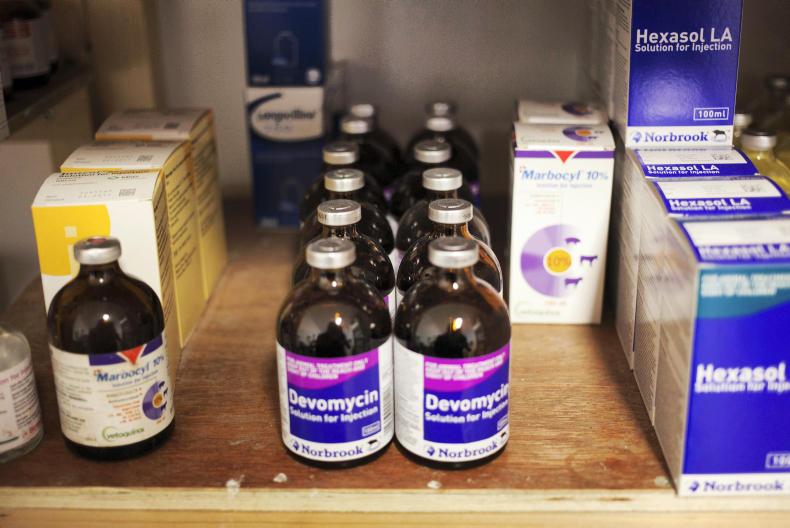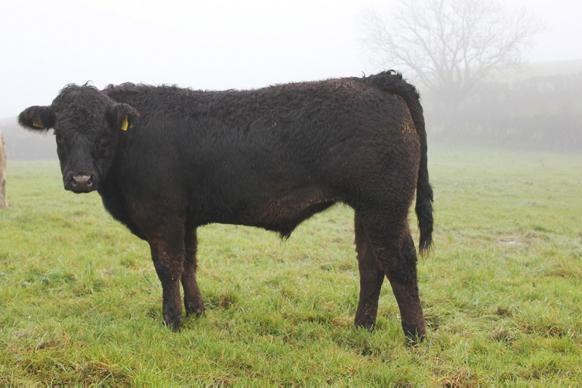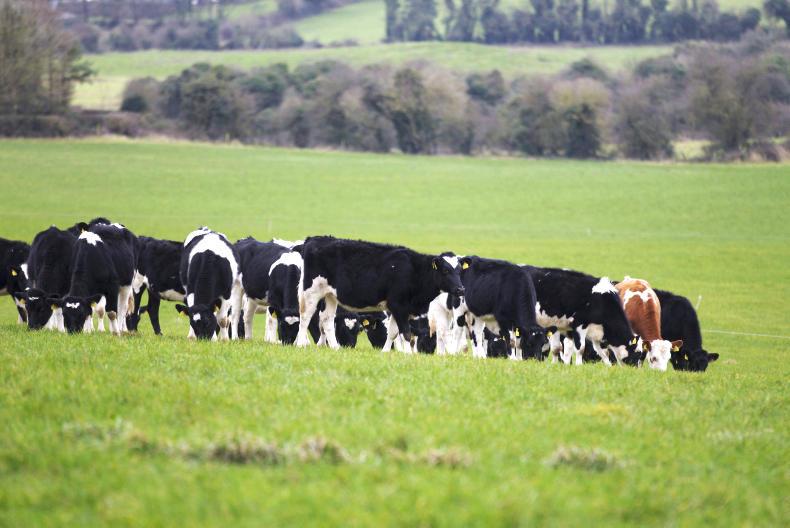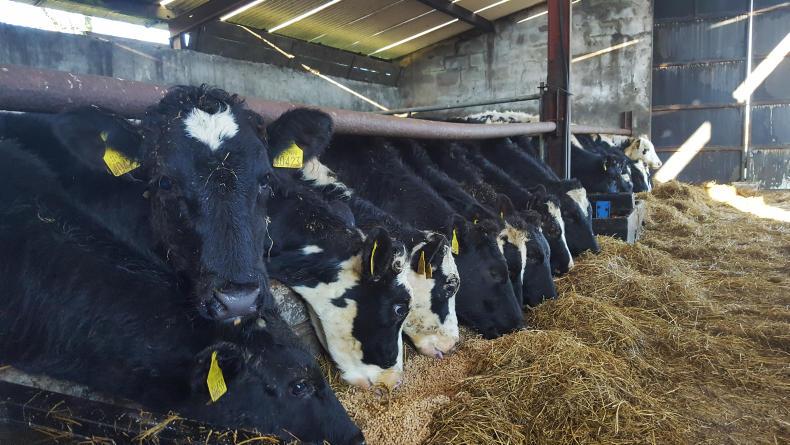Housing is now taking place on many farms, due to the heavy rain and poor grazing conditions we have had over the last fortnight. Grazing is coming to an end a little earlier for a lot of farmers out there, with the grazing rotation not quite finished on some farms.
Many farmers are grazing by day and housing at night, in an effort to graze off the last of the paddocks in their autumn plan.
If it is possible to graze off these heavy paddocks, it’s good to do so now, in order to have good average farm cover (AFC) at the end of grazing.
In some areas, it’s just too wet to graze and heavy covers will have to be carried over. The forecast from Met Éireann has plenty of showers in store for the weekend, but early indications suggest a cold easterly breeze for next week, which might help dry out paddocks for farmers, to get the last few grazed off.
In south Tipperary, our farmer has a growth rate of 22kg DM/ha/day and a demand of 40kg DM/ha/day. He has 80% closed and about two weeks of grazing left. Cows are allocated 3kg of concentrates and 15kg of grass. They are milking 11.5kg, at 5.14% fat and 4.12% protein (1.09kg MS).
Our farmer in mid-Cork is finished grazing as of Tuesday gone by and he found conditions were getting very bad. The cows were dried off 10 days ago and were split into four groups. His grass is still growing very well, and no wonder when it was 16°C on Sunday. The cows’ bags have dried up well outside, so he feels it should be safe enough housing them now. The silage bales are very good quality and now he is hopeful that it won’t spur them on in milk.
In west Clare, our farmer has a closing cover of 595kg DM/ha and a cover of 1,600kg DM/ha on the first paddock closed off. Cows are on 4kg of concentrates and are milking 13 litres, at 4.66% fat, 4.16% protein (1.18kg MS)and 305 SCC.
To achieve maximum utilisation, restrict silage in the cows diet before turnout to grass.Don’t be tempted to graze paddocks closed in early October just because growth rates have been good and these paddocks have high covers. Stick to the plan as best as you can.If housed already and there is still some paddocks to be grazed out, wait until dry weather comes to get cows out, or try on/off grazing in controlled allocations.Steven Fitzgerald, farm manager,Teagasc Curtin's Research Farm
Grazing will end here tomorrow (Thursday). Cows are out full-time and are currently on a diet of grass and 3kg of concentrates. We could have stretched out grazing by supplementing with silage, but because ground conditions were not too bad we decided to keep cows out to graze off the paddocks and have them back growing for the spring. Grass growth is 20kg DM/ha/day and demand is 32kg DM/ha/day. The average farm cover is 602kg DM/ha (342kg DM/cow). We had a lot of rain over the past two days, but no damage was done and we kept cows moved on regularly. Some paddocks were difficult to graze down, but on average they were grazed to 4.5cm. Grass DM is 14%. Over 60% of the herd has been dried off now between the empty and problem cows. The remaining cows will be dried off indoors. Cow condition is good at 3.15. The cows are milking well, producing 14 litres at 5.72% fat, 4.41% protein (1.46kg MS), 4.67% lactose and 172 SCC. So far, we have grown 16.5t of grass dry matter. The paddocks that were closed in early October have good covers of 1,500 and 1,200kg DM/ha.
Donal Patton, Farm Manager, Ballyhaise Research Farm
Grazing conditions are tough here in Ballyhaise. Cows are out for two to three hours per day and brought in once they start walking. They are allocated 6kg of grass, 7kg of silage and 3kg of meal. There are three paddocks left to graze and these should be finished by next Monday. The average farm cover is 730kg DM/ha and the growth rate is 11kg DM/ha/day. The farm should be closed at 620-630kg DM/ha. Some closed paddocks have covers of 1,600kg DM/ha. I don’t mind carrying these over the winter because next spring we have a very compact calving period and a very high demand (3.5 LU/ha in first rotation), so we need as much grass as possible. Some areas of the farm are just too wet in early spring, so we need to carry more grass on the drier paddocks to have enough to keep going. The dry cows are on pit silage, while the milking cows are getting baled silage. We will hold one bale per cow over spring as an insurance policy for times of poor growth. Cows are milking 10.3 litres at 5.17% fat, 4.09% protein (1kg MS) and 330 SCC. The SCC should come down next week because we found the cows with high cell counts and dried them off. We housed the weanling heifers and weighed them. They averaged 236kg. The lightest crossbred calf was 200kg. They will now be on silage and 2kg of a high-energy heifer nut.
Bill Keane, Garranturton, Kilmacthomas, Co Waterford
I have had a very good year so far. There are two paddocks left to graze and they have covers of 1,800 and 1,900kg DM/ha respectively. My growth rate is 12.5kg DM/ha/day and demand is 26kg DM/ha/day. The average farm cover is 850kg DM/ha (165kg DM/cow), at a stocking rate of 1.76 LU/ha. Cows are on/off grazing and are allocated 10kg of grass, 5kg of silage and 2kg concentrate. On/off grazing is working well and cows are brought in from paddocks when they start getting restless. Breeding went very well this year and only 5.1% of the cows showed empty. To get the breeding right this year, it all came down to attention to detail, watching cows day and night for signs of heat. I was also very stringent on culling this year and if cows didn’t show in the 13-week period they were earmarked for going. To date, I have grown 9.5t of grass dry matter and I know I will be able to grow far more in the next few years. My aim is to grow 12t of grass in the future and this will be achieved by reseeding and improving soil fertility. I will only expand cow numbers as grass growth allows. The 56 cows are milking 10.6 litres at 4.77% fat, 4.01% protein (1kg MS) and 87 SCC. I have plenty of surplus bales made this year and I found it very hard to manage grass on a year like this, with a low stocking rate.
Denis O’Donovan, Rosscarbery, west Cork
All the cows have been dried off since the weekend. We dried them off in four different lots and put them on a bare paddock afterwards. Every cow was given an antibiotic tube and a sealer. Cows are currently indoors, but there are 10 days of grazing left (four paddocks) that have to be grazed off yet and hopefully if dry weather comes cows will get back out to finish them off. Currently the average farm cover is 850kg DM/ha, but I want it close to 750kg DM/ha at closing. The in-calf heifers are going to be left grazing an out-farm for the winter. They will be in paddocks with high covers of 2,000 to 3,000kg DM/ha and will have access to a bale of silage as well. This outside block will be reseeded next spring so I don’t mind them doing damage. Breeding was exceptional this year. Only 4% were empty after 12.5 weeks of breeding and only one heifer was empty out of 36. I put this down to cross breeding, having a vasectomised bull and monitoring cows regularly. This year we had 133 cows milking on a 40ha grazing platform. I don’t plan on expansion because at our high stocking rate I think any more cows would just be too costly. We have more than enough silage for the winter, which is always handy to have.
Housing is now taking place on many farms, due to the heavy rain and poor grazing conditions we have had over the last fortnight. Grazing is coming to an end a little earlier for a lot of farmers out there, with the grazing rotation not quite finished on some farms.
Many farmers are grazing by day and housing at night, in an effort to graze off the last of the paddocks in their autumn plan.
If it is possible to graze off these heavy paddocks, it’s good to do so now, in order to have good average farm cover (AFC) at the end of grazing.
In some areas, it’s just too wet to graze and heavy covers will have to be carried over. The forecast from Met Éireann has plenty of showers in store for the weekend, but early indications suggest a cold easterly breeze for next week, which might help dry out paddocks for farmers, to get the last few grazed off.
In south Tipperary, our farmer has a growth rate of 22kg DM/ha/day and a demand of 40kg DM/ha/day. He has 80% closed and about two weeks of grazing left. Cows are allocated 3kg of concentrates and 15kg of grass. They are milking 11.5kg, at 5.14% fat and 4.12% protein (1.09kg MS).
Our farmer in mid-Cork is finished grazing as of Tuesday gone by and he found conditions were getting very bad. The cows were dried off 10 days ago and were split into four groups. His grass is still growing very well, and no wonder when it was 16°C on Sunday. The cows’ bags have dried up well outside, so he feels it should be safe enough housing them now. The silage bales are very good quality and now he is hopeful that it won’t spur them on in milk.
In west Clare, our farmer has a closing cover of 595kg DM/ha and a cover of 1,600kg DM/ha on the first paddock closed off. Cows are on 4kg of concentrates and are milking 13 litres, at 4.66% fat, 4.16% protein (1.18kg MS)and 305 SCC.
To achieve maximum utilisation, restrict silage in the cows diet before turnout to grass.Don’t be tempted to graze paddocks closed in early October just because growth rates have been good and these paddocks have high covers. Stick to the plan as best as you can.If housed already and there is still some paddocks to be grazed out, wait until dry weather comes to get cows out, or try on/off grazing in controlled allocations.Steven Fitzgerald, farm manager,Teagasc Curtin's Research Farm
Grazing will end here tomorrow (Thursday). Cows are out full-time and are currently on a diet of grass and 3kg of concentrates. We could have stretched out grazing by supplementing with silage, but because ground conditions were not too bad we decided to keep cows out to graze off the paddocks and have them back growing for the spring. Grass growth is 20kg DM/ha/day and demand is 32kg DM/ha/day. The average farm cover is 602kg DM/ha (342kg DM/cow). We had a lot of rain over the past two days, but no damage was done and we kept cows moved on regularly. Some paddocks were difficult to graze down, but on average they were grazed to 4.5cm. Grass DM is 14%. Over 60% of the herd has been dried off now between the empty and problem cows. The remaining cows will be dried off indoors. Cow condition is good at 3.15. The cows are milking well, producing 14 litres at 5.72% fat, 4.41% protein (1.46kg MS), 4.67% lactose and 172 SCC. So far, we have grown 16.5t of grass dry matter. The paddocks that were closed in early October have good covers of 1,500 and 1,200kg DM/ha.
Donal Patton, Farm Manager, Ballyhaise Research Farm
Grazing conditions are tough here in Ballyhaise. Cows are out for two to three hours per day and brought in once they start walking. They are allocated 6kg of grass, 7kg of silage and 3kg of meal. There are three paddocks left to graze and these should be finished by next Monday. The average farm cover is 730kg DM/ha and the growth rate is 11kg DM/ha/day. The farm should be closed at 620-630kg DM/ha. Some closed paddocks have covers of 1,600kg DM/ha. I don’t mind carrying these over the winter because next spring we have a very compact calving period and a very high demand (3.5 LU/ha in first rotation), so we need as much grass as possible. Some areas of the farm are just too wet in early spring, so we need to carry more grass on the drier paddocks to have enough to keep going. The dry cows are on pit silage, while the milking cows are getting baled silage. We will hold one bale per cow over spring as an insurance policy for times of poor growth. Cows are milking 10.3 litres at 5.17% fat, 4.09% protein (1kg MS) and 330 SCC. The SCC should come down next week because we found the cows with high cell counts and dried them off. We housed the weanling heifers and weighed them. They averaged 236kg. The lightest crossbred calf was 200kg. They will now be on silage and 2kg of a high-energy heifer nut.
Bill Keane, Garranturton, Kilmacthomas, Co Waterford
I have had a very good year so far. There are two paddocks left to graze and they have covers of 1,800 and 1,900kg DM/ha respectively. My growth rate is 12.5kg DM/ha/day and demand is 26kg DM/ha/day. The average farm cover is 850kg DM/ha (165kg DM/cow), at a stocking rate of 1.76 LU/ha. Cows are on/off grazing and are allocated 10kg of grass, 5kg of silage and 2kg concentrate. On/off grazing is working well and cows are brought in from paddocks when they start getting restless. Breeding went very well this year and only 5.1% of the cows showed empty. To get the breeding right this year, it all came down to attention to detail, watching cows day and night for signs of heat. I was also very stringent on culling this year and if cows didn’t show in the 13-week period they were earmarked for going. To date, I have grown 9.5t of grass dry matter and I know I will be able to grow far more in the next few years. My aim is to grow 12t of grass in the future and this will be achieved by reseeding and improving soil fertility. I will only expand cow numbers as grass growth allows. The 56 cows are milking 10.6 litres at 4.77% fat, 4.01% protein (1kg MS) and 87 SCC. I have plenty of surplus bales made this year and I found it very hard to manage grass on a year like this, with a low stocking rate.
Denis O’Donovan, Rosscarbery, west Cork
All the cows have been dried off since the weekend. We dried them off in four different lots and put them on a bare paddock afterwards. Every cow was given an antibiotic tube and a sealer. Cows are currently indoors, but there are 10 days of grazing left (four paddocks) that have to be grazed off yet and hopefully if dry weather comes cows will get back out to finish them off. Currently the average farm cover is 850kg DM/ha, but I want it close to 750kg DM/ha at closing. The in-calf heifers are going to be left grazing an out-farm for the winter. They will be in paddocks with high covers of 2,000 to 3,000kg DM/ha and will have access to a bale of silage as well. This outside block will be reseeded next spring so I don’t mind them doing damage. Breeding was exceptional this year. Only 4% were empty after 12.5 weeks of breeding and only one heifer was empty out of 36. I put this down to cross breeding, having a vasectomised bull and monitoring cows regularly. This year we had 133 cows milking on a 40ha grazing platform. I don’t plan on expansion because at our high stocking rate I think any more cows would just be too costly. We have more than enough silage for the winter, which is always handy to have.













SHARING OPTIONS